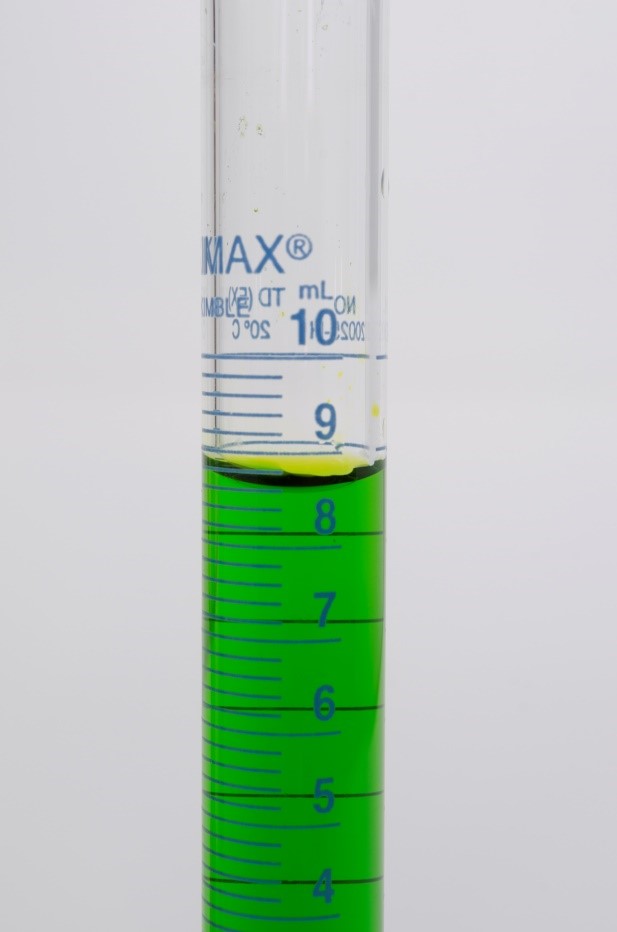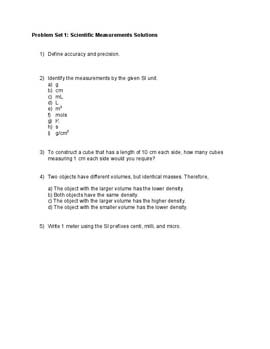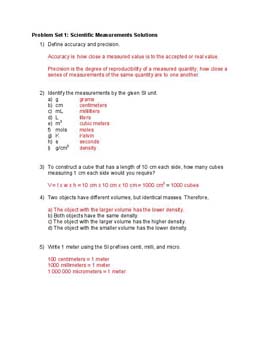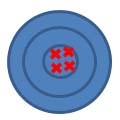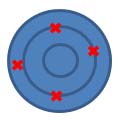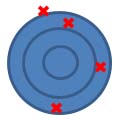Apply your Knowledge
Learn the theory at your own pace, try examples and test your new abilities with the quiz.
(Click the banner to open.)
Scientific Measurements Review
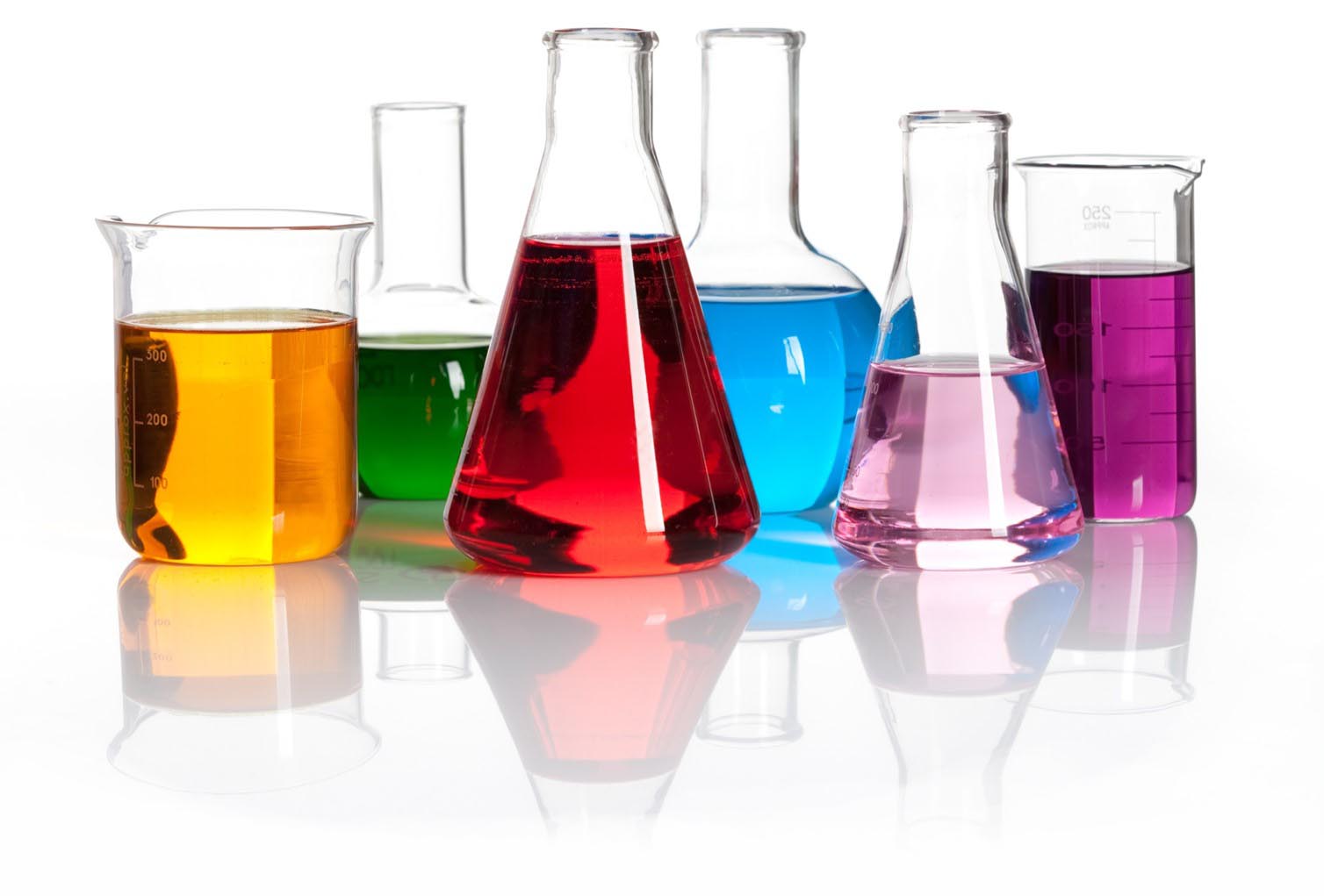
Accuracy:
How close a measured value is to the accepted or real value.
Precision:
The degree of reproducibility of a measured quantity; how close a series of measurements of the same quantity are to one other.
Scientific measurements generally adhere to the International System of Units (SI).
SI Base Units
Click on the symbol button to reveal the definition.
Note: Precise definitions of the SI units are not necessary to memorize. Rather, the relationships between the units and how to use them are the important parts to know.
| Quantity | Unit | Symbol |
|---|---|---|
| Length | Meter | m |
| Temperature | Kelvin | K |
| Time | Second | s |
| Mass | Kilogram | kg |
| Amount of Substance | Mole | mol |
| Electric Current | Ampere | A |
| Luminous Intensity | Candela | cd |
SI Derived Units
Click on the symbol button to reveal the definition.
Volume
Volume is a measure of space. It is a unit of length raised to the third power.
The SI unit of length is the meter. One meter cubed is equivalent to 1000 L. Litres, which are a convenient unit for scientific measurements, are a more common measurement unit than meters cubed.
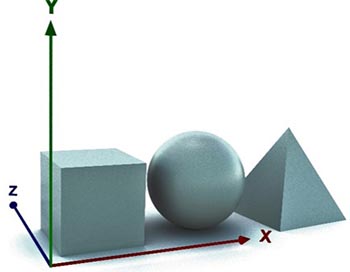
1 L = 1 dm\(^{3}\)
1 L = 1000 mL
1 cm\(^{3}\) = 1 ml

Density
A ratio of mass (m) to volume (V) of a substance.
\(\text{Density} = \frac{\text{Mass}}{\text{Volume}}\)
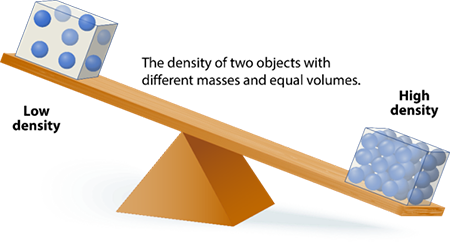
SI Prefixes: Units of Measure for All Sizes
Multipliers that change unit values by multiples of ten.
| \(1\,nm = \frac{1\,um}{1000\,nm} = \frac{1\,mm}{1000\,um} = \frac{1\,m}{1000\,mm} = \frac{1\,km}{1000\,m} = 0.000\,000\,000\,001\,km\) |
| \(1\,km = \frac{1000\,m}{1\,km} = \frac{1000\,mm}{1\,m} = \frac{1000\,um}{1\,mm} = \frac{1000\,nm}{1\,um} = 1\,000\,000\,000\,000\,nm\) |
